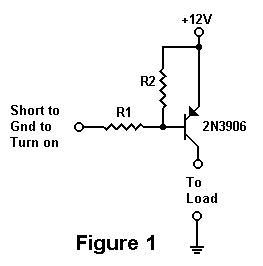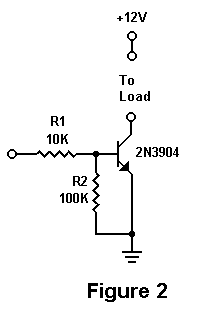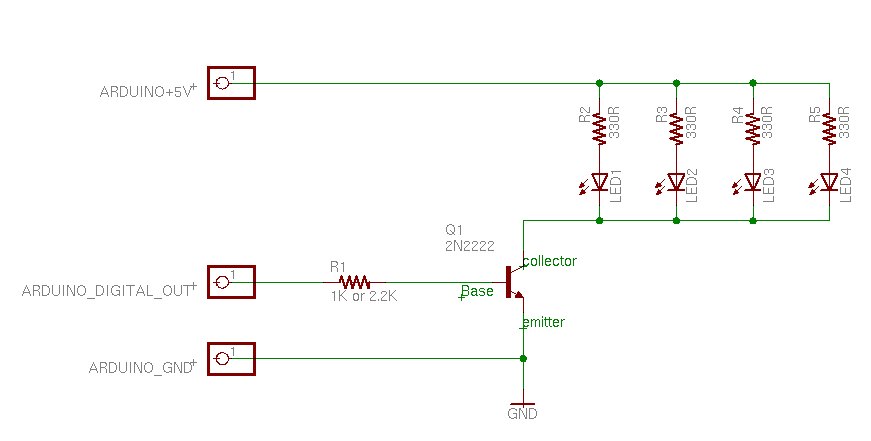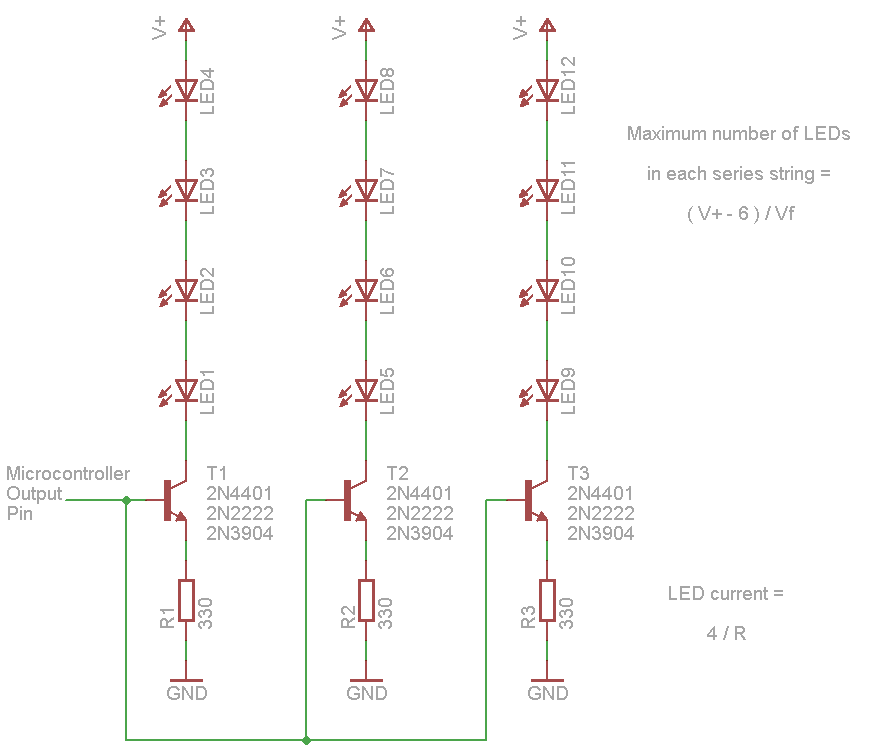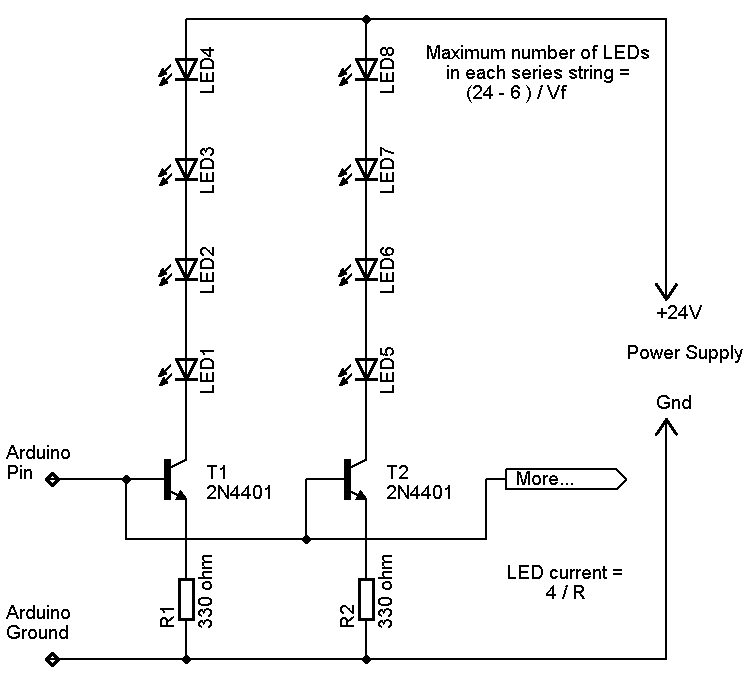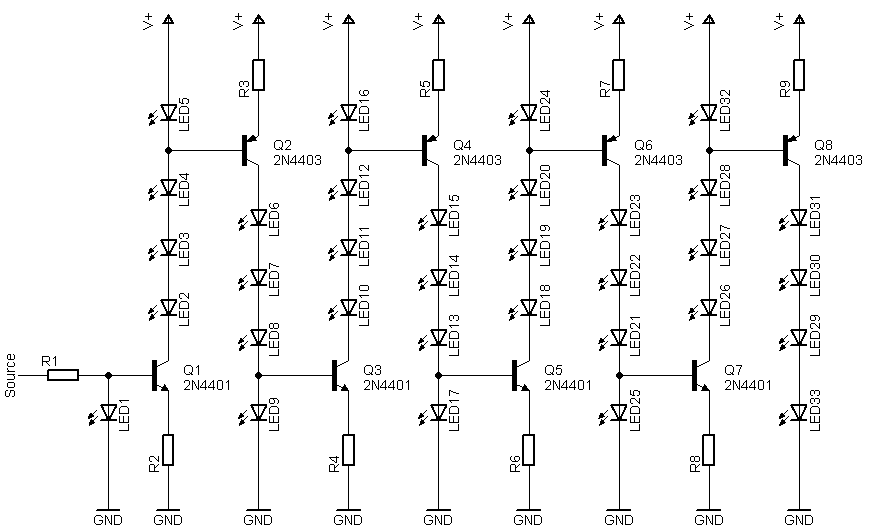robotic arts: electric light/Spring 2011
week 1 (classwork/assignment/demo), week_2 (tech demo,assignment), week_3 (tech demo, assignment), week_4 (tech_demo, assignment), week_5 (assignment) week_6 week_7, week_8 (assignment), week_9 (assignment) week_10 (assignment) week 11 (assignment), week_12 (assignment_12), week_13 , week_14 (assignment)
interactivity is a relationship of mutual influence, analogous to a conversation, and enacted by a process typically involving four steps:
1. input
2. processing
3. output
4. feedback
Process is a series of tasks that result in a goal.
Computation is the act of determining the specific tasks and the instructions to accomplish those tasks that need to be performed to reach the goal. If one can specify a sequence of tasks and related instructions which when followed will result in the completion of the goal then the problem is thought to be computable. Computation is about breaking a process into a series of tasks. Often these tasks must be performed in a specific sequence, where, for example, the performance of task 2 is predicated on the performance of task1, etc… A series of tasks leading to a specific result is called an Algorithm.
Code is a system of signals used to represent letters or numbers in transmitting messages.
A system of symbols, letters, or words given certain arbitrary meanings, used for transmitting messages requiring secrecy or brevity.
A system of symbols and rules used to represent instructions to a computer. Programming languages are comprised of code. Programs themselves are Algorithmic.
an Algorithm is a series of tasks leading to a specific result. Do you hear that echo? Scripts, and programs can be considered Algorithms. Successful Algorithms:
1. Reach their goal.
2. Are Lean (no redundancy or extraneous steps).
3. Are designed for the specific system that will run (parse) them in mind.
4. May be Unilateral/one dimensional or Interactive/Adaptive.
Another term that we can use when developing an algorithm, is narrativity.
Narrativity is a specific quality of different media that advances the interaction toward a specific goal.
- If you think of your project as a story, and you can think about a story as a process, narrativity is the level to which specific parts of the story keep things moving to specific moments or events or places within the narrative structure.
- Sometimes you want things to move along quickly toward specific points, and sometimes you don’t.
- What do you want the participants to experience, and why?
- How do the experiences you want to create for the participant relate to each other, and how do they all function to support your intention for your project?
- In short, how do you keep your participants engaged in your interaction schema?
in our class we will focus on learning through making, interactivity, and narrativity,
what about works that aren't interactive?
- works/projects that don't respond to their environment at all are called static
- works that receive and respond to input in pre-defined, and relatively simple ways, and do not vary their output (or adapt) to users over time are called responsive.
- it is essential that you learn to differentiate between static, responsive, and interactive forms.
Final project:
Your final projects will be presented at robotfest, which will occur on SATURDAY April 30th, at the Historical Electronics Museum in Linthicum – this is mandatory!!!! this year's robotfest will feature a fashion show for those of you working with wearables/lilypad, etc.- We will arrive at the Museum by 10am and be done by 3pm.
- Please block out a lot of time over the last two weeks in april to complete your projects!!!
- Documentation of your final project is due on the last class for the semester.
- Each of you is required to submit your final documentation on time. Failure to submit documentation (video/audio) of your project will result in a LOWER FINAL GRADE. We will go over documentation strategies during class, prior to the Robotfest.
- robotfest
Welcome to the world of arduino, arduino lilypad, and jeenode
Arduino The Documentary (2010) English HD from gnd on Vimeo.
lilypad
jeenode
- getting started with arduino - you can purchase a pdf version for $9.99
- arduino software
- online arduino tutorials that follow and supplement 'getting started with arduino', above.
- basic electronics, including soldering, common parts, etc..
- fritzing
- processing
- c++
- graffiti research lab
What to buy (you'll be using either an arduino, a lilypad, or a jeenode, the choice is yours, we'll go over all of them):
Arduino
- arduino USB board
- USB a-b cable (select the length from the drop down, default is 1', more is better...)
- breadboard and wire kit # 03MB104WK
Lilypad Arduino
- lilypad pro kit
- alligator clips with leads, please buy (2) 10 packs - so 20 alligator clips with leads total, part # 05ALS2
- breadboard # 03MB104 (you don't need the wire kit)
Jeenode
- Jeenode (an arduino clone with an onboard rf module)
- usb a mini cable + FTDI chip
- includes optional ports library
additional resources:
- softwear (***free ebook on wearables - lilypad/arduino, etc.)
- arduino
Make Magazine
instructables
leah beuchley intro to the lilypad arduino - practical arduino (book)
- 30 arduino projects for the evil genius
- google searches on lilypad, arduino
- youtube searches on lilypad, arduino
- conductive threads delicious page
- problemboard delicious page
where to buy stuff, online, and locally:
- electronix express
- sparkfun
- moderndevice
- digikey
electronics goldmine (***slow shipping***) - all electronics
- baynesville electronics (***on joppa road - expensive, but in an emergency...)
- middle river hobbies (***motors, other hobby electronics gear***)
- servocity (***where to buy servo motors***)
- american science and surplus
- octopart (a search engine just for electronic parts)
Electronic Art, Artists, and Projects List
***
Tonight we're going to introduce the class, answer questions, look at some work and have a demo on using EL wire/phosphorescence.
the discovery of diffraction of the white light spectrum
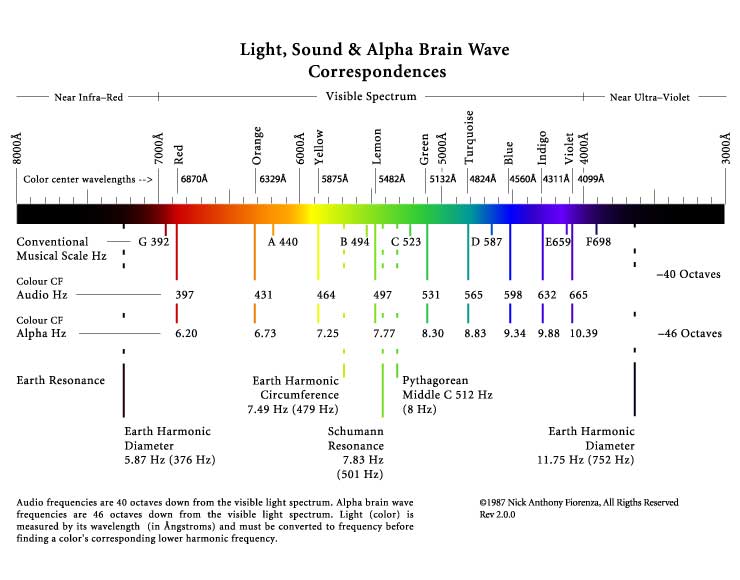
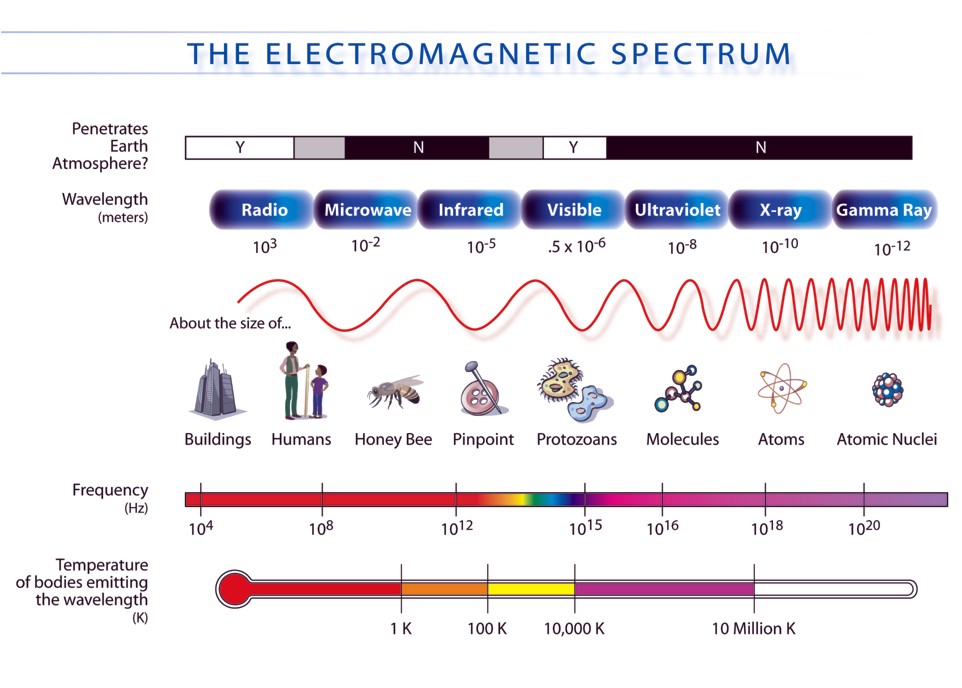
ELEN 4193 of Columbia University - visual perception studies using an Arduino.
Studio Practice Methods
your works are points on a communal and interdisciplinary continuum of material investigation. please contextualize your works accordingly.
light artists:
pixelator - jason eppink
james turrell
olafur eliasson
hiro yamagata
irwin redl
leo villareal
jim campbell
dan flavin
burning man...
new media art now:
some simple steps to make art as a mimetic, herd animal in the context of individual expression, and the domain of the internet....
"activity is the only community" leslie scalapino, her poem way is seminal.
sketch out a project.
research similar projects.
study/critique those projects.
note the cliches (the common gestures/materials/concepts).
eliminate the cliches in your own project.
rigorously recompose your work with whatever is left.
if you find yourself treating one aspect of your project differently than the other materials (ie, making something precious) remove it.
when you get to a point that you're engaged with and intrigued by what you've done, do a bit more searching/critique.
? + ! = ;-)
repeat earlier steps as necessary.
realize it.
present it.
complete.
Electroluminescent wire
is composed of a thin copper wire coated in a phosphor that glows when an alternating current is applied to it. in general the higher the frequency of that current (up to 4000Hz), the brighter the wire will glow.
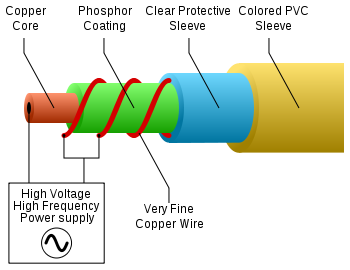
where to buy:
great for accessories, specifically:
mounts
splitters
great for
f2, f42 4000hz drivers
hi bright, 3rd generation wire, that glows 50% brighter than other EL if the inverter supplies alternating current at 4000Hz.
with EL wire, ++Hz == ++brightness
**be sure that the inverters you buy can handle the lengths of el wire you are using.
ELEN 4193, Modern Display Science and Technology at Columbia University.
EL experimenter's kit link -- had some DuPont EL powder.... currently not available...
for your own experiments you'll need:
- One vial of DuPont Luxprint phosphor ink
- One vial of DuPont Luxprint dielectric ink
- One vial of DuPont Luxprint silver ink
- Three indium tin oxide (ITO) coated glass substrates
- One EL power supply
controlling EL wire:
there are some products on the market that purportedly give you control over EL wire from an arduino. we haven't had consistent success with these products.
if you need to turn strands of EL wire on/off via arduino, purchase some splitters from thatscoolwire, and use relays with the arduino to power them. we'll demo that today.
- prepare a 10 minute presentation on your research and interests for this class.
- cite specific projects that interest you.
- if you know, please mention whatever peripheral tech you'll be using, ie, languages (openframeworks, cinder, processing, arduino, etc.) + other devices/materials.
- if you'd like to get involved with arduino, please get one (see above), along with:
- order and download 'getting started with arduino'
- familiarize yourselves with fritzing (ie, download it and go through the first lesson)
- familiarize yourself with the class grades/grading policy
++your presentations++
from last week:
How Fluorescence and Phosphorescence Work:
Fluorescent paints, for example, are paints that glow only when irradiated by an energy source. A good example is the phosphor lining on the inside of a fluorescent tube. Current flowing through mercury vapor inside the tube creates ultraviolet rays that strike the phosphor. These ultraviolet rays knock the electrons around the phosphor atoms into higher orbits. The electrons immediately fall back down releasing the energy they absorbed from the ultraviolet rays as visible light.
Phosphorescence functions in much the same way, except that once a light ray (beam of photons) bumps an electron into a higher or more energetic orbit the electron gets stuck there. It's like a ball getting stuck in one of the traps in a pinball machine. It stays put until the plunger underneath the trap pushes it out so it can drop down to the bottom of the table. The temporary entrapment is called a metastable state.In the case of phosphorescence, what nudges the electrons out of the energy trough that has them trapped is random thermal fluctuations in the crystal structure of the medium. This is why phosphorescent things glow weaker but longer when cold and brighter but shorter when hot. An easy way to demonstrate this is to get some phosphorescent paint glowing and press it with your thumb for a few seconds. The area under the thumb will be heated and when the thumb is removed, will glow slightly brighter than the surrounding cool area.
physical properties of light, via wikipedia:
Light is the portion of electromagnetic radiation that is visible to the human eye, responsible for the sense of sight.
Visible light has a wavelength in a range from about 380 or 400 nanometres to about 760 or 780 nm,[1] with a frequency range of about 405 THz to 790 THz. In physics, the term light often comprises the adjacent radiation regions of infrared (at lower frequencies) and ultraviolet (at higher), not visible to the human eye.[2][3]
**Primary properties of light are:
- intensity,
- propagation direction,
- frequency or wavelength,
- polarization, and
- phase,
while its speed, about 300,000,000 meters per second (300,000 kilometers per second) in vacuum, is one of the fundamental constants of nature.
Light, which exists in tiny "packets" called photons, exhibits properties of both waves and particles. This property is referred to as the wave–particle duality. The study of light, known as optics, is an important research area in modern physics.
diy strobe/arduino intro
Temporal aliasing is the term applied to a visual phenomenon also known as the stroboscopic effect. It also accounts for the “wagon-wheel effect”, so called because in video or motion pictures, spoked wheels on horse-drawn wagons sometimes appear to be turning backwards.
Temporal aliasing is one example of a range of phenomena called aliasing that occur when continuous motion is represented by a series of short or instantaneous samples. It occurs when (a) the view of a moving object is represented by a series of short samples as distinct from a continuous view, and (b) the moving object is in rotational or other cyclic motion at a rate close to the sampling rate.
Temporal Aliasing is something which we in marginal instances have to deal with when playing animations in the Flash Player.
nate true's time fountain **uses UV light, which is potentially hazardous. you can create a very similar effect with water+white pigment and super bright, white, LEDs...
FLiCKr - brion gysin's dream machine
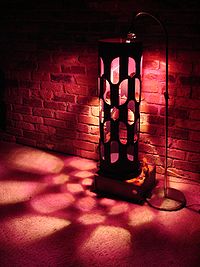
how to make one
the iPhone app
richard box's field of fluorescent tubes powered by ambient current
Field from Mintonfilm on Vimeo.
1-bit light art project:
create a project that uses two electric light sources and is installed somewhere on campus.
your light sources need to have two states: on/off
the meaning, and content of your work is the relationship between the light sources you choose, and their relationship with their environment.
your projects must not expose anyone to risk of shock or disorientation
you must be sure that your project is permitted to be in the space you choose.
action steps:
scout the campus for sites.
observe ambient light conditions - how do the ambient lights change throughout the day, how can your project work with/incorporate those lighting conditions, how can you make them work for you?
determine what electric lights you'd like to use
locate electrical outlets, etc - be sure your installation considers and integrates all of its elements into its composition - i.e., think like an installation artist, everything counts.
we'll present these projects in three weeks
a film by>>
alan yentob: imagine let there be light, parts 1-4
LEDs
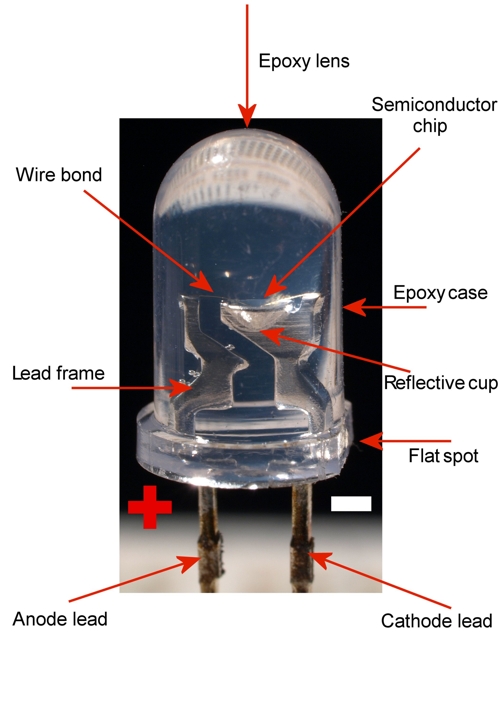
hacking (circuit bending?) rave lights/ transistors
"If you learn to solder and can drill a small hole to mount compoments in (switches, resistors, jumper-wires, transistors, etc.) , you can circuit-bend. Everything else is a process of non-technical, routine experimentation in which various connections are created in an attempt to alter the target device's behaviors."
***
transistors have many uses, including the ability to turn things on and off. while there are limitations as to what we can switch on and off, transistor switches offer lower cost and substantial reliability over conventional mechanical relays.
let's review the basic principles for transistor switches using common bipolar transistors.
we're going to look at two types of transistors, PNP, and NPN - you can find out which type of transistor you have by typing in its part # + the word transistor to google, and looking at the data sheets that are returned from your search. you can use either a PNP or NPN, but they require different connections to work, so be sure you know what you've got:
NPN >>
PNP >>
PNP
the most commonly used transistor switch is the PNP variety in figure 1, below. the secret to making a transistor switch work properly is to get the transistor in a saturation state. for this to happen we need to know the maximum load current for the device to be turned on and the minimum HFE of the transistor. For example, if we have a load that requires 100MA of current and a transistor with a minimum HFE of 100, we can then calculate the minimum base current required to saturate the transistor as follows:
Minimum base current = 100 MA / 100
Minimum base current = 1 MA
In actual practice, it is best to calculate about 30% more current than we will need to guarantee our transistor switch is always saturated. In this case, we will use 1.3 MA. We must also select our supply voltage, so for this example we will use 12 volts. We can now calculate resistor R1 in the circuit as follows:
Maximum Current Required = 100MA
Supply Voltage = 12 Volts
R1 = Supply Voltage / ( Maximum Current Required / Minimum HFE * 1.3 )
R1 = 12 / (.1 / 100 * 1.3)
R1 = 9230.7 or 10K for nearest standard value.
Resistor R2 is not essential to this circuit but is generally used for stability and to insure that the transistor switch is completely turned off. This resistor insures that the base of the transistor does not go slightly negative which would cause a very small amount of collector current to flow. The value of this resistor is not critical but a value about 10 times R1 is normally chosen. For this circuit we will calculate R2 to be 10 times R1 as follows:
R2 = 10 * 10000
R2 = 100K
To turn on our transistor switch all that is needed is to short resistor R1 to the negative ground.
NPN
While PNP transistors are normally used for a negative ground configuration, it is possible use a NPN transistor if a positive ground configuration is desired as indicated in Figure 2. The calculation of resistor values is identical to the PNP version. However, in the NPN transistor, R1 must be shorted to the positive end of the supply to turn the switch on.
While our transistor switch can easily replace many mechanical relays, it does have a few drawbacks. The maximum design current must not be exceeded or the output voltage will be reduced. A short circuit of the output will overheat and destroy the transistor in many cases. Although the transistor is in saturation when turned on, about .3 volts is lost through the collector to the emitter of the transistor. We must also insure that the maximum power dissipation of the transistor is not exceeded. We can calculate the power dissipation by multiplying the current by .3 volts. In the case of 100 MA, the transistor must be able to withstand 30 milliwatts (.3 times .1).
how many LEDs can you put on one arduino pin, using the power from the arduino? *** all of the circuits below can brighten and dim via PWM
using an external power supply, you can power many more LEDS >>
T1, T2, and T3 are NPN transistors, they act as switches and when you apply a small current to their bases (the middle connector as shown), it allows a larger current to flow through it and lights up that string.
The 24v would be the V+ shown in the schematic.
330 is a 330 ohm resistor (orange-orange-brown) that is needed to limit the current through the leds to prevent them from frying.
work on your 1-bit light art project (see above).
bring in your materials to work in class during next session.
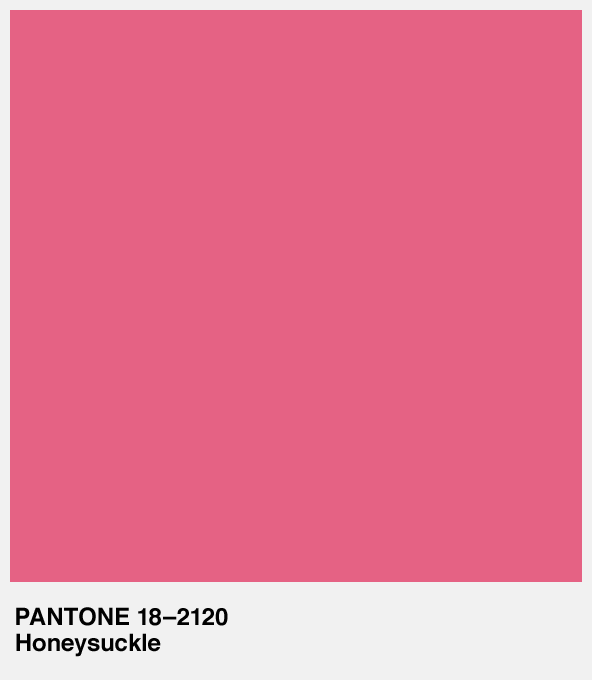
why didn't somebody tell me?
panetone's color of the year for 2011.
- r: 203
- g: 101
- b: 134
how they choose the color of the year.
today we will build and program circuits that extend the output of the arduino to work with more LEDs in two ways:
digital outputs (on/off) via shift-register part# 74hc595
tutorial on the arduino and 74hc595
arduino library for the 74hc595
analog outputs (PWM), via 16 channel pwm chip # tlc5940
seeedstudio RGB LED shield v1.4
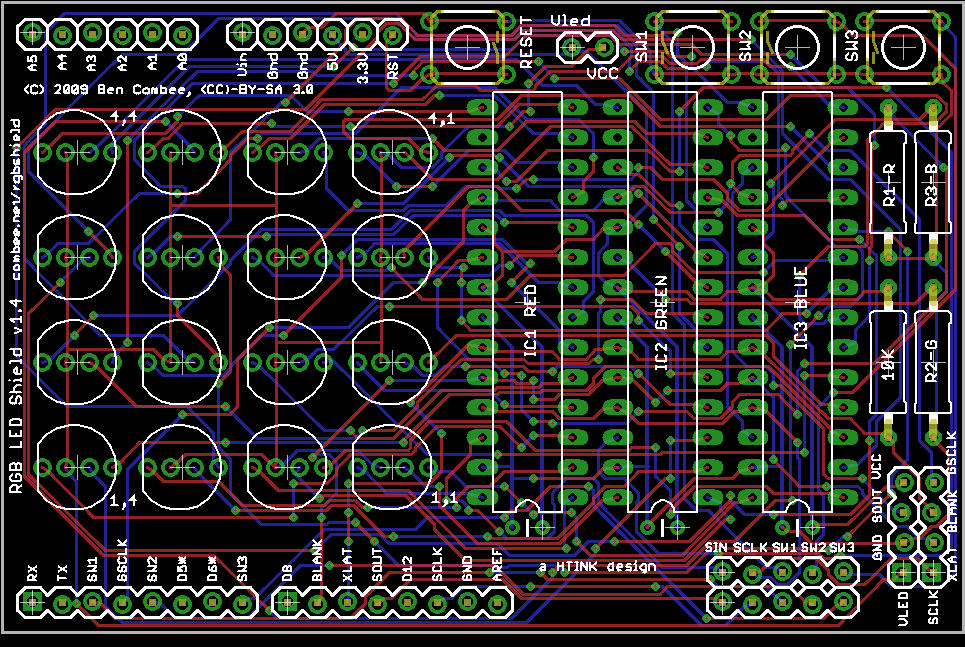
This Arduino-compatible shield uses three TI TLC5940 PWM LED driver ships to drive a 4x4 array of RGB LEDs. Each color is controlled by a different chip so you can adjust the reference resistors for the appropriate current. This also includes mounting positions for for three general-purpose buttons that are connected to ground, and a reset button. The TLC5940 chips are not directly connected to any Arduino pins, but a header is provided for you to make a manual connection depending on the needs of your sketch.
If you'd like to build one, you can get a full kit from Seeed Studio for $35. They also sell just the PC board for $6.50.
Programming the RGB LED Shield
To program your Arduino to control the RGB LED shield, you first need to install the tlc5490arduino library from http://code.google.com/p/tlc5940arduino/. Do this by downloading the ZIP file from the site, unpacking the TLC5490 folder, and putting it into your Arduino IDE's hardware/libraries folder.
***You'll then need to modify the tlc_config.h file to change the line
#define NUM_TLCS 1
to read
#define NUM_TLCS 3
...since there are three TLC5490 ICs in this circuit connected in series.
Here are a few example sketches that use the library to make different patterns.
- TLC_wavy.pde, Eric Moore
- TLC_box_1.pde, Ben Combee
- TLC_box_2.pde, Ben Combee
- TLC_arrows2.pde, Ben Combee
On the shield, the four LEDs at the corners are labeled with their X,Y coordinates: "1,1", "1,4", "4,1", and "4,4". The formula to turn a coordinate into a LED number is (X - 1 + (Y - 1) * 4).
persistence of vision w/ arduino (in german, but you can figure it out once you download the sketch).
continue work on your 1-bit project - presentation next week!
honeysuckle khakis.
1-bit light art crit
then
lasers
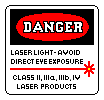



How do lasers work?
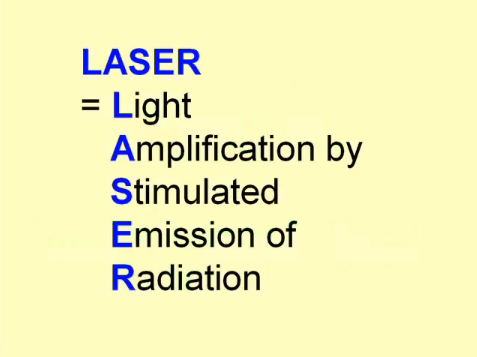
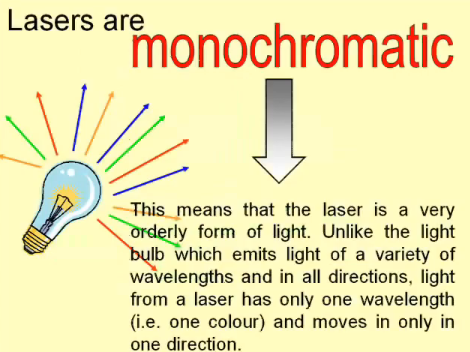
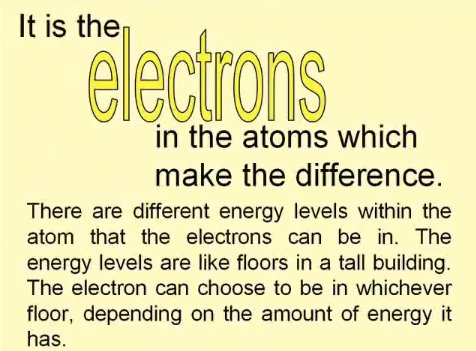
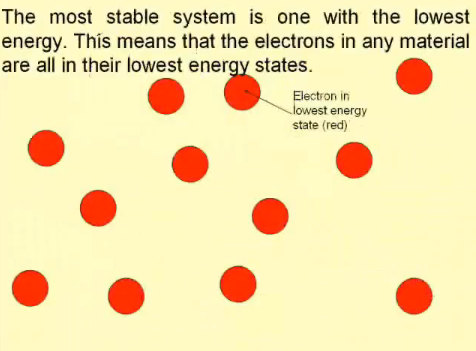
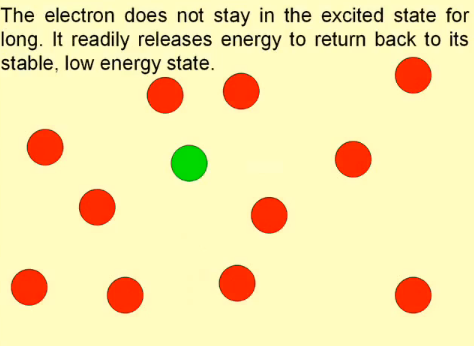
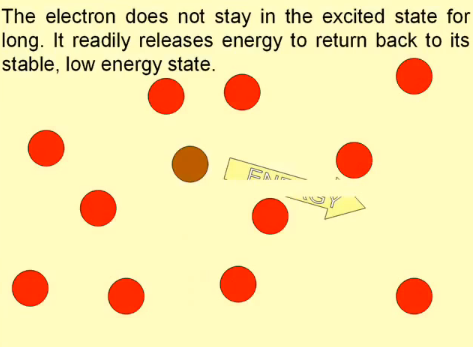
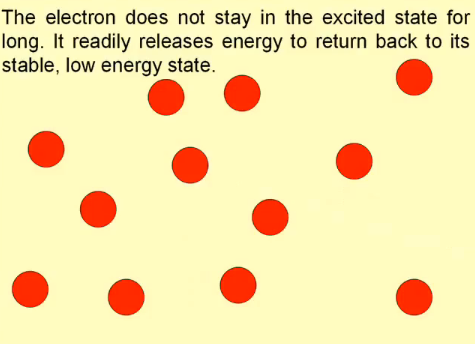
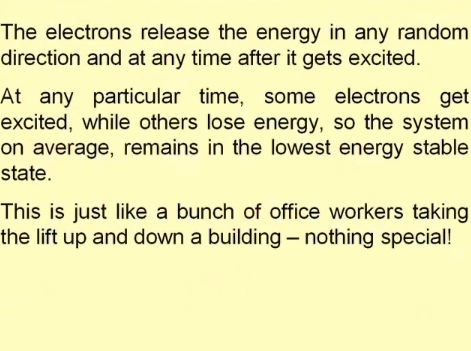
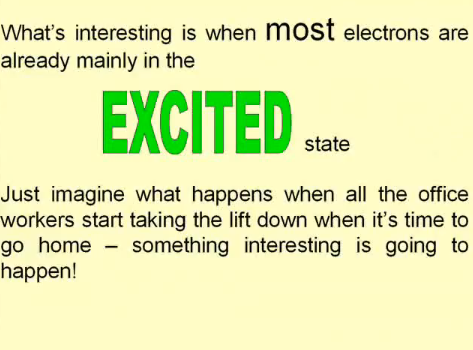
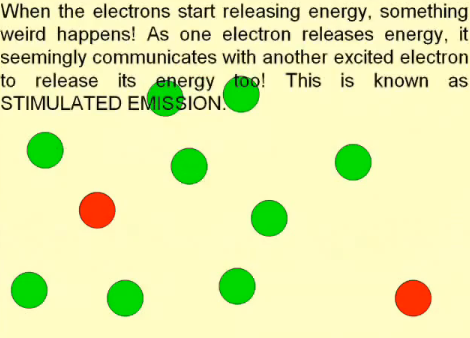
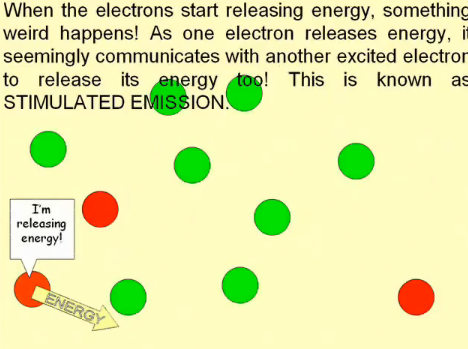
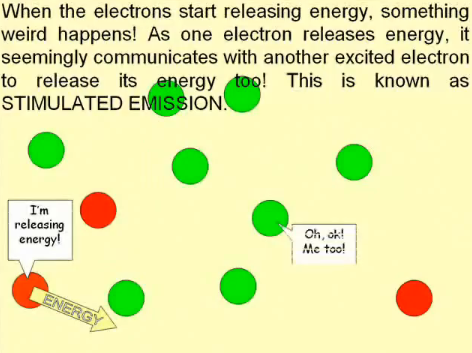
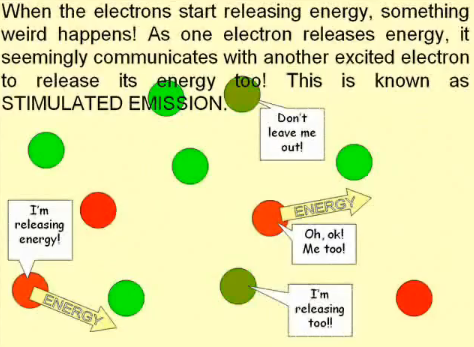
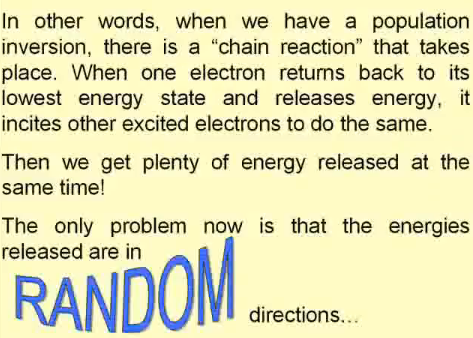
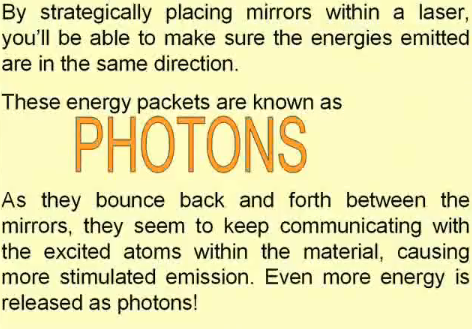
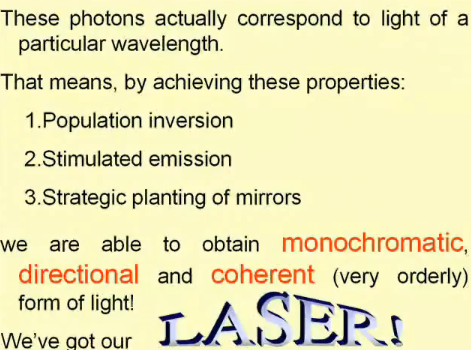
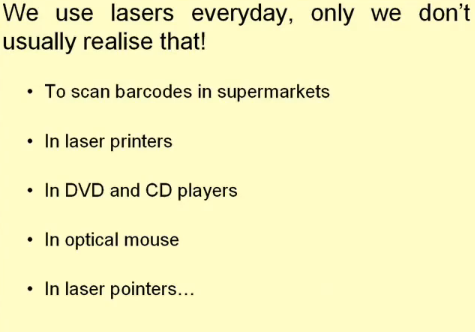
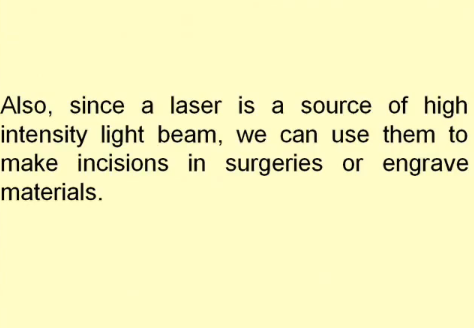
BE CAREFUL!
DO NOT USE LASERS OF ANY COLOR THAT ARE GREATER THAN (>) 5mW.
DO NOT SHINE LASERS DIRECTLY INTO YOUR EYES, OR ANYONE ELSE'S EYES.
BEAR THESE WARNINGS IN MIND WHEN MAKING YOUR LASER PROJECT (see below).
but first, a word about luminous efficacy...
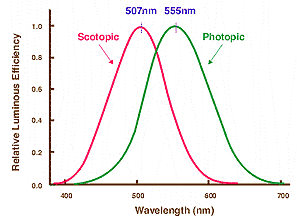
The photopic curve is for normal vision, and the scotopic curve is for eyes that are adjusted to the dark.
An interesting thing to note is that (for day vision) our eyes are most effective at picking up green light at around 555 nm - which is also the main wavelength of light emitted by our sun! This is evolution in action, our eyes evolved so as to most effectively utilize the resources available.

Yellow=Plant Growth White=Purple Spectrum (purple is a mix of blue and red) Green=Human Senstivity
Illuminance: the luminous power incident per unit area of a surface. One lumen per square meter is one lux. One lumen per square foot is one foot-candle.
Lux: an illuminance equal to one lumen per square meter.
Lumen: by definition there are 683 lumens per watt of radiant power at a wavelength of 555 nm (wavelength for green light).
Lumens are for humans to judge and measure the brightness of mainly green light (that looks bright white to humans), which is also the the colour that plants reject the most, that's why chlorophyll is green.
LASER LIGHT BOX
CREATE A SMALL PROJECT OUT OF FOAM CORE/CARDBOARD/ENCLOSURE OF YOUR CHOICE-CREATION
USING REFLECTIVE AND REFRACTIVE, TRANSLUCENT AND TRANSPARENT MEDIA CREATE A CONSTRUCTION OF MULTIPLE PLANES
ILLUMINATE THIS CONSTRUCTION WITH AT LEAST ONE LASER
THE CHALLENGE OF THIS PROJECT IS TO HAVE YOU EXPLORE LASER LIGHT ACROSS MULTIPLE SURFACES.
you can get most of what you need from the mica book store, utrecht, rite-aid, etc.
you can get lasers from ebay, amazon, and pet-smart (laser pointer toys for pets, $5.95, nice).
Laser info --->
Laser Companies
Rayfoss.com- A respectable Chinese company, the first I recommend for newcomers. Rayfoss sells medium quality lasers for excellent prices. If you have any questions or concerns, e-mail them and expect amazing customer service. They bend over backwards to meet your order needs, and often throw in free goodies if you are friendly.
LEDShoppe.com- A non-respectable Chinese company, but they sell low quality lasers for rock-bottom prices. The quality is still far higher than what you would find at a normal store like Target or Sharper Image. Only purchase the 5mW from here, as their 20mw and up lasers all look the same brightness (they are all the same laser, but they do a POT mod on them to boost the power, resulting in higher amounts of infrared light which helps fake the numbers, green light stays the same).
Novalasers.com - A very respectable company. Expect high quality for matching prices. They sell unusual lenses and diffractors.
Optotronics.com - Laboratory and military level equipment, ultra-high quality, very high prices. They are excessively overpriced on the low-end (below 100mW), but if you want very high-powered lasers, they are tough to beat.
Dragonlasers.com - Medium quality company. The main product to purchase from them is their laser safety goggles, which are top quality for low price. They have an excellent list of lenses and optics to purchase as well. As any respectable laser enthusiast would say, you should buy goggles since $25 is a small price to save your vision. I personally don't use them unless I'm working with something high powered (over 300mW), and am very careful and aware of what I am reflecting off of, that being said, I'm still only a 1/100th of a second reflection off my eye to go blind.
Wickedlasers.com - Stay away from this company. With good marketing they take advantage of unknowledgable newbies by selling them low quality lasers and gear for insane prices. Don't be sucked in by their flashy videos and photos (which are very misrepresented by playing with photoshop), they also boost their public image by paying people to write extremely favorable reviews of their company. To put it simply, they're a ripoff.
Powering your laser(s).
laser modules/diodes require specific power. usually they need 3.3 volts.
look-------->
if you don't have an arduino you can get a regulated power supply at the voltage that your laser requires OR you can get a 3v battery holder from radio shack and use two "AAA" batteries OR you can get an anyvolt micro.
you can safely power up to five laser diodes from one 3.3volt source. if you are using batteries, the added lasers will deplete them within an hour or so.
a battery powered laser diode (laser pointer) typically lasts about 90 minutes. be prepared!!!
do not use any lasers that are rated beyond 5mW!!!
make sure that your project does not subject the viewer to having laser light shone directly into their eyes!
good luck!
next week bring in your materials!
Optical illusion« sounds pejorative, as if exposing a malfunction of the visual system. Rather, I view these phenomena as bringing out particular good adaptations of our visual system to standard viewing situations. These adaptations are »hard-wired« in our brains, and thus under some artificial manipulations can cause inappropriate interpretations of the visual scene. illusions can reveal mechanisms of perception and these mechanisms of perception tell us about our past, and greatly influence our future. As Purkinje put it:
»Illusions of the senses tell us the truth about perception« (cited by Teuber 1960).
Some illusions are long known to mankind, eg. the water- fall illusion was mentioned by Aristotle: after staring at a waterfall for a couple of minutes neighbouring objects seem to be shifting upwards. This was followed up by Lucretius, Purkinje and Addams who coined the term 'waterfall illusion'. Recent evidence suggests that this motion aftereffect is not due to 'fatigue' but rather due to a gain adjustment, an optimal adaptation to prevailing conditions. The description of numerous illusions, in particular geometric illusions, in the 19th century was followed by striking new ones, many of which rely on computer animation, in the last decade.
Classification:
•Luminance and contrast
the hermann grid read/experience the following two pages
• Motion
stepping feet
•Geometric or angle illusions
curry's paradox
• 3D interpretation: size constancy and impossible
figures
muller-lyer illusion
A large class of illusions is probably caused by size constancy. This is an important mechanism where our visual system multiplies retinal (or angu- lar) size with assumed distance, enabling us to estimate size independent of geometrical perspective.
•Cognitive/Gestalt effects
• Colour
hilton's lilac chaser
purkinje:
squealing wall laser interferometer:
persistent granule pattern of laser light
laser vibration visualizer:
1. cup/can
2. small piece of latex/balloon/adhesive cling wrap
3. small piece of reflective tape/small mirror/piece of dvd-cd
4. electrical tape/glue/hot glue/glue dot
5. laser
6. 12" thin metal rod/clothespins
steps:
make a small drum---->
create a tube by cutting the bottom off of a cup or can
cut the opening of a small balloon off
stretch the upper part of the balloon across the top of the cup or can
adhere it.mount your laser either directly onto the cup or can, shining down onto the balloon at a slight angle.
adhere your small piece of reflective media to the spot on the balloon surface where the laser point hits.
aim the reflected point onto a light colored surface.
dim the lights.
make noise.
alternative:
mount the balloon/cling wrap onto a bass speaker/woofer
white laser
7 color laser spirograph
simple laser projector
you can simply buy a motor and mount a piece of acrylic mirror/cd-dvd on the shaft.
OR
you can use an arduino with the L298 motor controller to vary the speed of the motor/effect.
http://www.robotshop.com/solarbotics-l298-motor-driver-kit-2.html
crit
how to ask smart questions in online environments
peter hutton
"i don't think of my works as 'films', i think of them as notes on looking at things that interest me in the world."
"quiet, contemplative engagement." (begin at 14:09)
in titan's goblet (1991)
Taking its title from a surreal Hudson River landscape painting by Thomas Cole circa 1833, In Titan's Goblet inscribes subtle patterns and movements of sky, sun, moon, and fire. Day becomes night, and night day, as the dawn's first light glimmers over a dark copse of trees, fleecy clouds pass like ice floes across the moon, and a bulldozer plows its way across an infernal valley of burning tires.
In Titan's Goblet depicts, in a series of often-stunning, silent, black and white, discrete images the Catskill Mountain area. In this case, however, a sequence of lovely images of what at first appears to be mist in the mountains is slowly revealed to be a distant fire of rubber tires that had burned out of control. That is, Hutton's serene, evocative landscapes are, in this instance, qualified by an environmental problem -- one that confronts our hunger for imagery of pristine nature.boston fire (1979)
swinging the lambeth walk (amazing around 2:11)
free radicals
color box (1935) an ad for the post office....
stan brakhage, black ice (1994)
bill viola chott el-djerid, a portrait of light and heat, (begin at 1:41)
tech:
if you want just the kinect, get this
if you want the xbox, and also want to connect the kinect as a standalone, you'll need this in addition to the full xbox360
useful technical info on the kinect ***please read
kinecthacks youtube channel
The OpenNI organization is an industry-led, not-for-profit organization formed to certify and promote the compatibility and interoperability of Natural Interaction (NI) devices, applications and middleware.
kinect -- ladyada
kinect to max
jit.freenect.grab -- jitter object courtesy of jean-marc peltier. install this first
try this *** PLEASE RELOAD WHEN COPY PASTING...there are a lot of LOADBANGS that need to go through in order for stuff to work
kinect to various software via OSC -- this is for 10.6 only!!!
kinect to processing
kinect to processing via daniel shiffman library
kinect to processing via nrocy (scroll to mid page for specific binaries (leopard/snow leopard)
kinect to max via processing -- good intro **includes no code
download tuio library, rename it tuio
download MSAfluid for processing
download KinectCoreVision
start KinectCoreVision (configure it, then leave it running).
run the MSAfluid demo
look!
tara donovan interview **please read - tara makes some great points about a practice based on material investigation.
begin to think about a final project
next class please be prepared to talk about what you'd like to do for a final project.
i'll ask you to begin prototyping your final project and work towards presenting your prototype for a critique during the first week of april.
....and more crit.....
your final project sketches
final presentation info:
RobotFest -- saturday, april 30, 10am-3pm @ the national electronics museum
View Larger Map
jim campbell's new work
start prototyping your final project, prototype presentation in two weeks!
today is a workshop day for the prototypes for your final project. next week you'll present your prototypes for a crit.
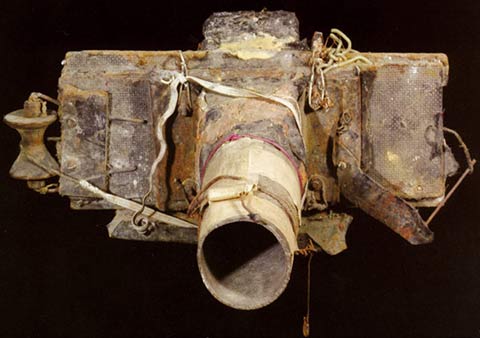
"A mistake. That's what makes the poetry." miroslav tichy
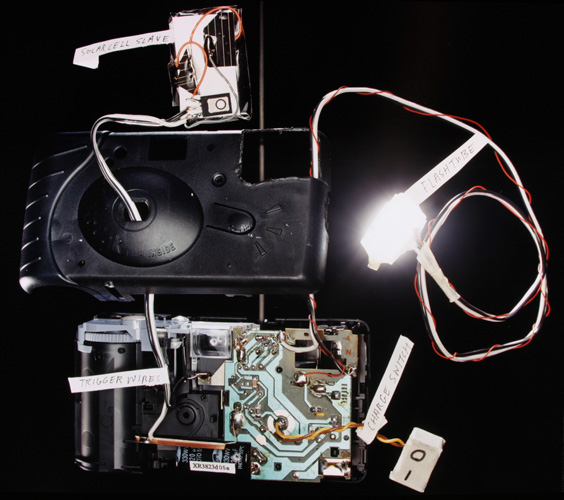
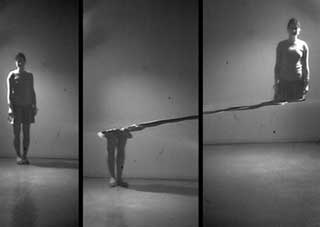
Lighting Resources!
---->LED section - where to buy, different types, how to mix, etc.
----> on the sensation of illumination (that's what s/p ratios describe)
----------> s/p ratios of various common light sources
tomi engdahl's site of lighting, fog machines, etc, and electronics
please develop a working prototype, and a brief presentation including some references to relevant artworks from your past or from others.
present your prototype/researc next week.
your prototype presentations
a little more jim campbell...
James Campbell from Jun Lee on Vimeo.
picasso guitars 1912-1914 at MoMA
kinetic light
moholy-nagy
This piece of lighting equipment is a device used for demonstrating both plays of light and manifestations of movement. The model consists of a cube-like body or box, 120 x 120 cm in size, with a circular opening (stage opening) at its front side. On the back of the panel, mounted around the opening are a number of yellow, green, blue, rot, and white-toned electric bulbs (approximately 70 illuminating bulbs of 15 watts each, and 5 headlamps of 100 watts). Located inside the body, parallel to its front side, is a second panel; this panel too, bears a circular opening about which are mounted electric lightbulbs of different colors. In accordance with a predetermined plan, individual bulbs glow at different points. They illuminate a continually moving mechanism built of partly translucent, partly transparent, and partly fretted materials, in order to cause the best possible play of shadow formations on the back wall of the closed box. (When the demonstration occurs in a darkened space, the back wall of the box can be removed and the color and shadow projection shown on a screen of any chosen size behind the box.) The mechanism is supported by a circular platform on which a three-part mechanism is built. The dividing walls are made of transparent cellophane, and a metal wall made of vertical rods. Each of the three sectors of the framework accommodate a different, playful movement study, which individually goes into effect when it appears on the main disc revolving before the stage opening.
the artist's documentation from 1930
frank j. malina - kinetic painting, the lumidyne system --> shaky video showing the mechanism
----> long, steady view of lot 119
---> the pleasures of light: gyorgy kepes and frank malina at the ludwig museum, budapest
jessica stockholder
important moments in the lecture above:
->color as an event 9'30"
-->38'
--->1:04
each of these artists makes compelling work, and each has a different point of view and practice.
one can investigate the phenomenological, intellectual, and sensual - but theories, categories, and modes, with their evocation of fixed values, may be less effective than strategies and formulae.
keith sonnier at ace gallery, fluorescent room in seoul, more
at mary boone
work on your final projects!
today will be a workshop day, but first...
painter, masterful studies of color -- at the end of the clip the site changes to minus space,
and we get a discussion of his practice.
how could robert's practice be transposed to electric light artists?
the monochromatic
olafur eliasson's room for one color
---> low-pressure sodium bulbs
arduino + dmx + MAX + OSC + chauvet colorStrip
---> chauvet colorStrip / dmx
----> dmx arduino shield
-----> arduino dmx library
the LED RGB tubes of last week can be controlled via dmx
an alternative --->
---> digital, waterproof, RGB LED flexi strip
please continue to work on your final assignments.
i'll have information about the installation next week.
final project workshop!
today you'll have time to finish your projects, and plan for the installation, documentation, and transportation.
reminder --->
- your final projects will be presented at robotfest, which will occur on SATURDAY April 30th, at the Historical Electronics Museum in Linthicum – this is mandatory!!!! this year's robotfest will feature a fashion show for those of you working with wearables/lilypad, etc.
- we will arrive at the museum by 10am and be done by 3pm.
- please be sure to bring all of the equipment you need for your project, including extension cords, adaptors, etc.!
- there will be no class on may 5th
- your documentation is due by tuesday, may 12 (send me a link to whatever you've uploaded)
***for robotfest info see above!
please read ---> after screen array aesthetics
a special treat abandoned yugoslav monuments
what do abandoned monuments reveal about a culture?
what are our abandoned monuments?
- your final projects will be presented at robotfest, which will occur on SATURDAY April 30th, at the Historical Electronics Museum in Linthicum – this is mandatory!!!! this year's robotfest will feature a fashion show for those of you working with wearables/lilypad, etc.
- we will arrive at the museum by 10am and be done by 3pm.
- please be sure to bring all of the equipment you need for your project, including extension cords, adaptors, etc.!
- there will be no class on may 5th
- your documentation is due by tuesday, may 12 (send me a link to whatever you've uploaded)
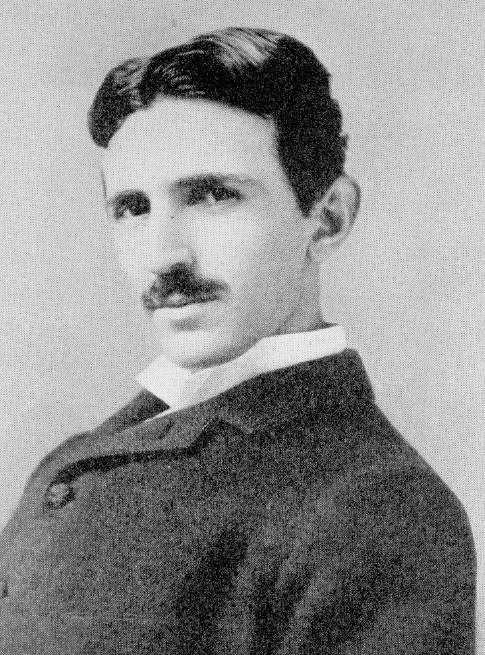
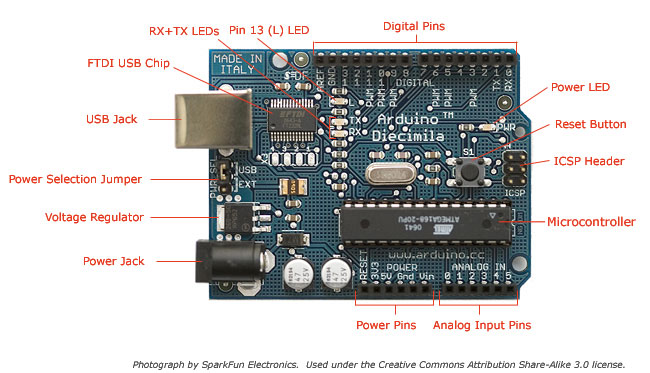
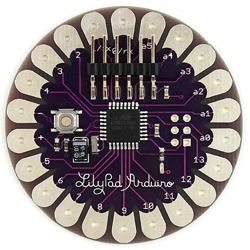

.svg.png)
.svg.png)
